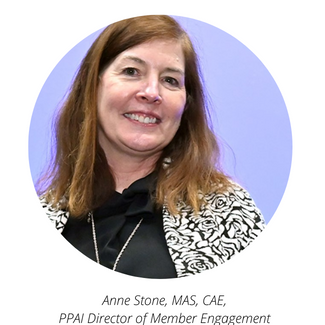Responsibility: The Race To Net Zero

ESG, or environmental social governance, is changing the way publicly traded corporations view their balance sheets. Activist investors have driven this movement predicated on the concept that corporations should value purpose alongside profit, and both the investment community and legislators have proved to be enamored of this concept.
Those publicly traded corporations, such as cloud-based software company Salesforce, are increasingly looking to their supply chains to align with and support their efforts. Private companies should be taking note of this evolving ESG landscape, too.
Recently I had the opportunity to catch up with Louisa McGuirk, senior manager of sustainable procurement for Salesforce. I first met Louisa when she joined us as part of a corporate social responsibility panel during the 2022 PPAI North American Leadership Conference, where she shared the visionary work Salesforce is doing in the sustainability space.
Words matter, so at the outset of our conversation, I asked Louisa about the terminology Salesforce uses in its work. At Salesforce, “ESG” is most often used in relation to reporting and accountability to stakeholders, while “sustainability” describes its work to accelerate global progress to net zero and create a nature-positive future.
As a corporation, Salesforce believes business is the greatest platform for change and has an obligation to address what it considers to be a climate emergency. Salesforce has net zero residual emissions today and has set ambitious targets to reduce and compensate for greenhouse gas emissions across its full value chain in pursuit of limiting global warming to 1.5 degrees Celsius for a future that avoids the worst impacts of climate change.

To accomplish this goal, Louisa is working beyond Salesforce’s four walls to drive a sustainable reaction down the supply chain. The beauty in this approach is in its ripple effect. Salesforce cannot reach net zero without the engagement of its suppliers, its suppliers cannot meet net zero without their suppliers, and so on. That’s where companies like those in the promotional products industry begin to fit into this conversation.
According to Louisa, at least 90% of Salesforce’s greenhouse gas emissions come from its supply chain. Therefore, collaboration with its vendors and partners will play a critical role in its ability to achieve its goals. Salesforce is now embedding binding climate contract provisions into its supplier agreements with its “Sustainability Exhibit.” Additionally, it includes questions about sustainability when requesting proposals for business, and its sustainability expectations are folded into supplier business reviews.
Alongside the more traditional business KPIs and metrics you might expect, Salesforce has developed a framework that allows for sustainability to be scored throughout the life cycle of its supplier relationships. Salesforce is already seeing these efforts pay off. Suppliers have said that the contractual requirements of the Sustainability Exhibit were the principal driver in setting science-based targets or advancing their timelines to begin purchasing carbon credits.
Salesforce views these relationships as a partnership and an opportunity to bring other companies along on the net zero journey. Salesforce sets high expectations based on best practices and what the planet needs for a sustainable future, but recognizes that its supplier partners are in different stages of maturity with different resources. Across the sustainable procurement initiatives she leads, Louisa strives to take an inclusive approach to enabling progress by building in flexibility and providing support.

According to Louisa, there is a hierarchy of priorities related to achieving net zero. You must reduce your emissions first, but we’re at a moment in the climate crisis when we need all-of-the-above strategies to get us to net zero as quickly as possible. This means compensating for any residual emissions on an annual basis by purchasing avoidance or removal-based carbon credits of high quality today.
Investing in carbon credits is something Salesforce is doing in tandem with reducing emissions. If companies wait until 2030 to purchase carbon credits to meet their net zero goals, there likely won’t be much of a market available to support that demand. We need to invest in developing those projects today.
It will be important for promo businesses to begin to evaluate their sustainability strategy now, because Salesforce is not the only customer or stakeholder asking for transparency and a commitment to drive change. Beyond leading publicly traded companies, the federal government has a proposal related to expectations of federal contractors, California has introduced a bill around climate reporting, and many other states have bills under consideration.
Here are a few actions and resources you can pursue:
- Measure your own company’s carbon footprint. SME Climate Hub, smeclimatehub.org, is a nonprofit global initiative that empowers small to medium-sized companies to take climate action and build resilient businesses for the future. They offer free tools and resources to help you reduce your carbon emissions.
- Measure the carbon footprint of your supply chain partners. The Green House Gas Protocol, ghgprotocol.org, now offers a free Scope 3 evaluation tool. Scope 3 emissions are the result of activities from assets not owned or controlled by the reporting organization but which the organization indirectly affects in its value chain.
- Learn more about carbon credits and how to evaluate and purchase them via the Salesforce Sustainability Resource Center, www.salesforce.com/resources/sustainability.
Stone is the director of member engagement at PPAI.

